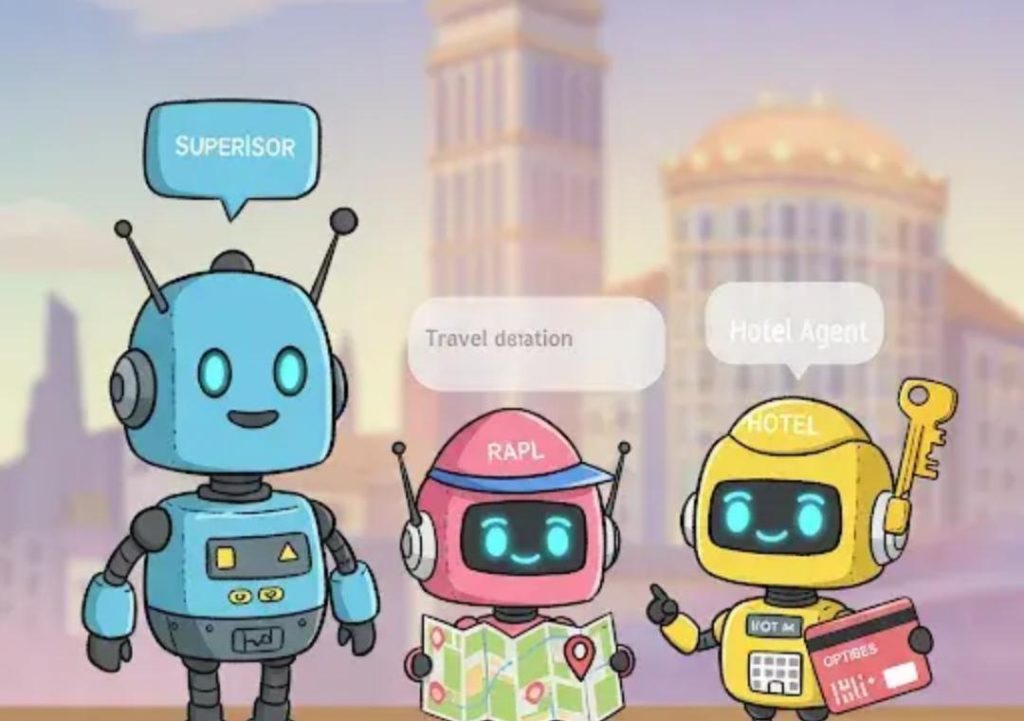
Multi-agent collaboration mimics real team dynamics
In recent years, artificial intelligence (AI) has become a crucial component of many industries, from healthcare to finance. One of the most promising applications of AI is multi-agent systems, which allow different agents to specialise, communicate, and collaborate across tasks. This modular setup creates digital workflows that mirror human teamwork, but at machine speed and scale.
In traditional AI systems, a single agent is responsible for performing a specific task. However, this approach has limitations. For instance, a single agent may not have the capacity to handle complex tasks or adapt to changing circumstances. Multi-agent systems, on the other hand, offer a more robust and flexible solution.
In this blog post, we’ll explore the benefits of multi-agent collaboration and how it can be applied to various industries.
What are multi-agent systems?
Multi-agent systems (MAS) are networks of autonomous agents that work together to achieve a common goal. Each agent is a self-contained program that can perceive its environment, reason about its actions, and act independently. Agents can be designed to perform specific tasks, such as data processing, decision-making, or communication.
In a MAS, agents can interact with each other in various ways, including:
- Negotiation: Agents can negotiate with each other to reach a mutually beneficial agreement.
- Cooperation: Agents can work together to achieve a common goal.
- Communication: Agents can share information and coordinate their actions.
- Competition: Agents can compete with each other to achieve their individual goals.
Benefits of multi-agent collaboration
Multi-agent collaboration offers several benefits over traditional AI systems:
- Scalability: MAS can scale more easily than traditional AI systems, as new agents can be added or removed as needed.
- Flexibility: Agents can be designed to perform specific tasks, making it easier to adapt to changing circumstances.
- Robustness: MAS are more robust than traditional AI systems, as multiple agents can work together to achieve a common goal.
- Autonomy: Agents can operate independently, making it possible to automate complex tasks.
Real-world applications
Multi-agent collaboration is already being applied in various industries, including:
- Healthcare: MAS can be used to analyze medical data, identify patterns, and make predictions. For example, a team of agents can analyze patient data, identify potential health risks, and provide personalized recommendations.
- Finance: MAS can be used to analyze financial data, identify trends, and make predictions. For example, a team of agents can analyze stock market data, identify potential investment opportunities, and provide recommendations.
- Manufacturing: MAS can be used to optimize production processes, manage inventory, and predict maintenance needs. For example, a team of agents can analyze production data, identify bottlenecks, and provide recommendations for improvement.
- Research: MAS can be used to analyze large datasets, identify patterns, and make predictions. For example, a team of agents can analyze research data, identify trends, and provide insights for further research.
Challenges and limitations
While multi-agent collaboration offers many benefits, there are also challenges and limitations to consider:
- Complexity: MAS can be complex to design and implement, as agents must be able to communicate and coordinate with each other.
- Scalability: MAS can be challenging to scale, as the number of agents increases.
- Trust: Agents must be able to trust each other to achieve a common goal.
- Security: MAS can be vulnerable to security threats, as agents can be compromised by malicious actors.
Conclusion
Multi-agent collaboration is a powerful tool that can be applied to various industries. By deploying a team of agents that can specialise, communicate, and collaborate across tasks, businesses can create digital workflows that mirror human teamwork, but at machine speed and scale. While there are challenges and limitations to consider, the benefits of multi-agent collaboration make it an exciting and promising area of research and development.
About the author
[Your name] is a content writer at Growth Jockey, a leading digital marketing agency. With a background in computer science and a passion for technology, [Your name] is always on the lookout for the latest innovations and trends in the AI and machine learning space.
Source



